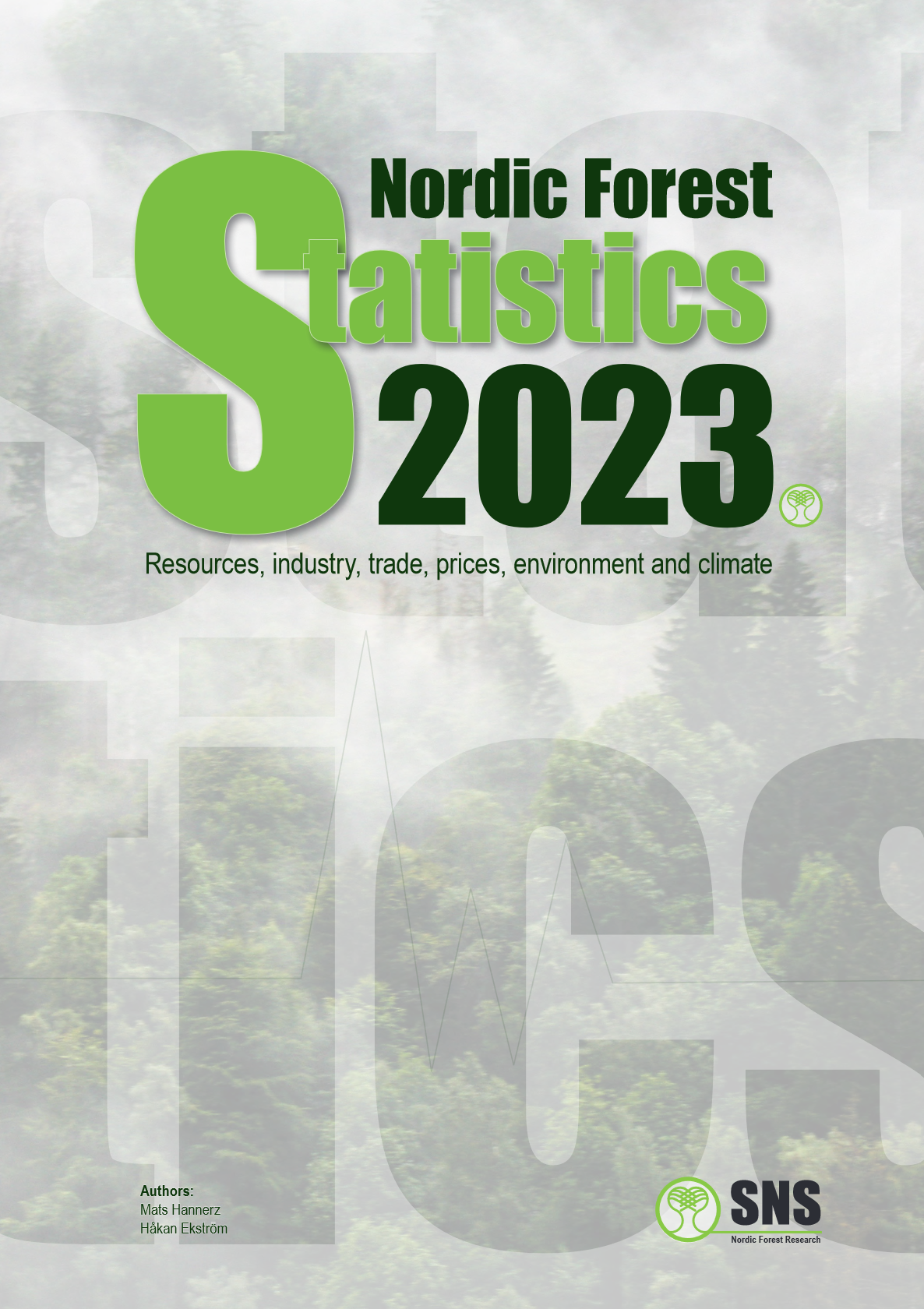Nordic Forest Statistics 2023
22.05.2023
Do you wonder which might be be the most common tree species in Icelandic commercial forests? The answer to this is among things found in a new publication titled Nordic Forest Statistics 2023. You will also find interesting knowledge such as the fact that although the Nordic countries only account for 1.6% of the world's total forest area, Sweden and Finland contribute 16% of global exports of sawnwood products and paper.
 The report states that Iceland is currently working to enhance the country's biodiversity and reduce land erosion by expanding anew the country's much degraded and lost forests. By volume, Siberian larch is the species of productive tree that has been planted the most in the country so far, according to the report.
The report states that Iceland is currently working to enhance the country's biodiversity and reduce land erosion by expanding anew the country's much degraded and lost forests. By volume, Siberian larch is the species of productive tree that has been planted the most in the country so far, according to the report.
The Nordic countries account for only 1.6% of the world’s total forest area, but this is an important percentage. Sweden and Finland contribute 16% of global exports of sawnwood products and paper, and 14% of pulp exports. Forests in Sweden and Finland, in particular, have been actively managed for a long time, and although much has been harvested, both countries have doubled their timber stocks over the past 100 years.
Nordic forests are also important for biodiversity in Europe, especially through the contiguous older forests in the northern part. Sweden, Norway and Finland are the only European countries that, according to the Biodiversity intactness index, are above the planetary limit for biodiversity. This and much more is reported in the compilation Nordic Forest Statistics 2023, which is an extended collection of statistics since the previous pilot version from 2020.
The report is 53 pages long, containing statistics on resources, industry, trade, prices, environment and climate. All tables and graphs are based on official statistics, however in some cases specially edited by the authors Mats Hannerz and Håkan Ekström. The report is published by the Nordic Forest Research which is a Nordic cooperation platform funded by the Nordic Council of Ministers.

